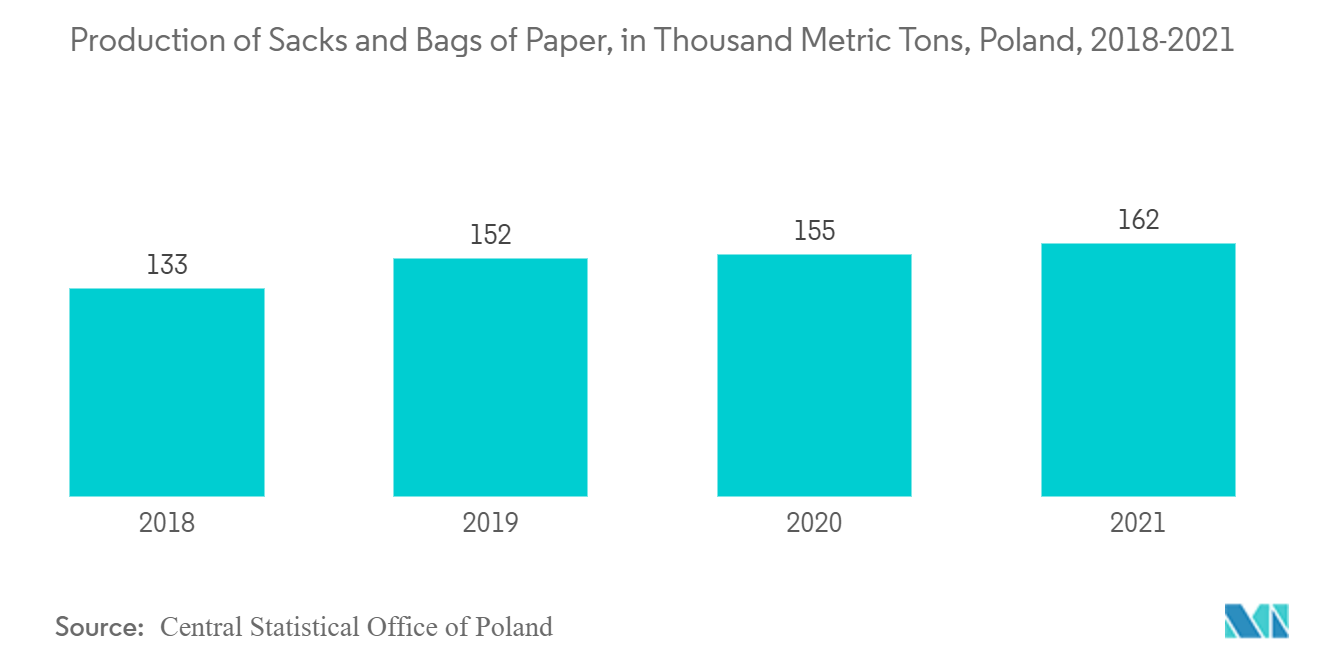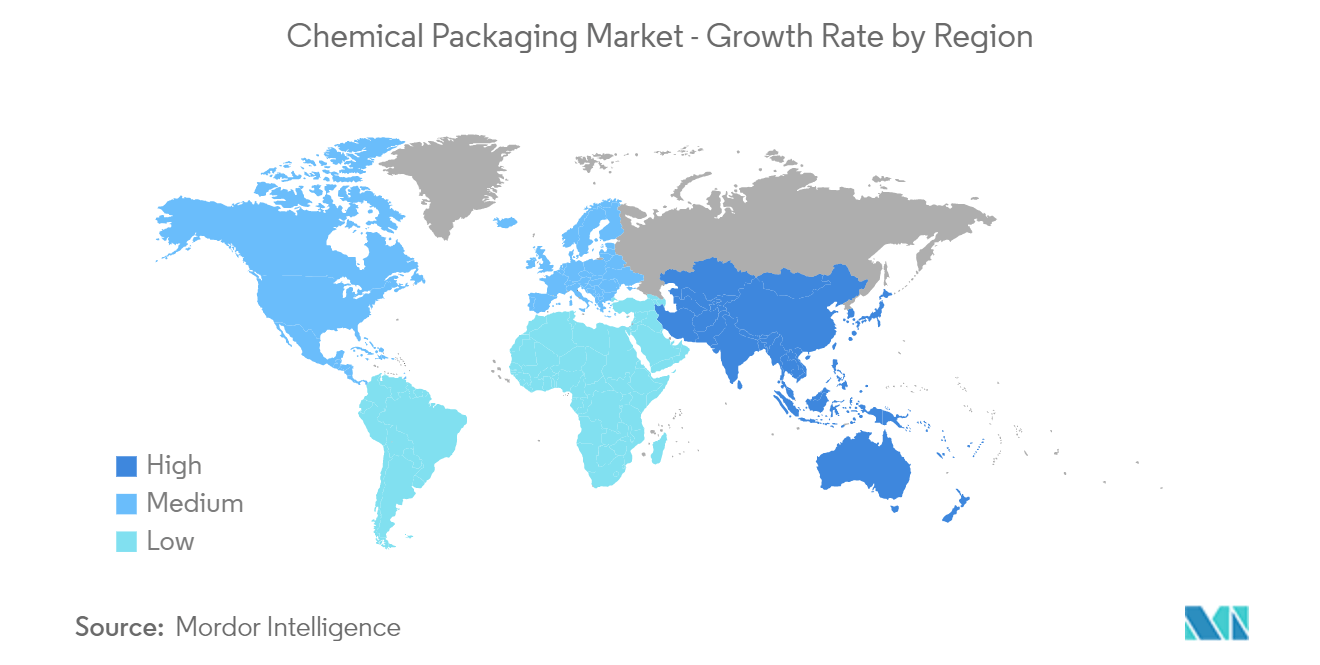Market Trends of Chemical Packaging Industry
Material Advancements have Led to Lighter Weight Alternatives and Use of Sustainable Products
- Paper and biodegradable sacks are preferred over plastic sacks or bags due to the increasing concern over plastic packaging waste generated worldwide. The circumstances have led to governments adapting to alternative sources such as biodegradable packaging. The United States accounts for only 4% of the world's population and generates 2% of global Municipality Solid Waste (MSW). It is also stated that the United States produces about 106.2 kg of plastic waste per person per year.
- In some regions, COVID stimulated companies from various industries to bring back single-use plastic bags rather than accept reusable ones, mainly due to single-use plastics' ability to reduce the risk of potential viral transmission. Hence, an increasing number of chemical companies have suspended reusable containers, and states have begun to rescind plastic bag bans temporarily.
- The rapid shift toward sustainable packaging solutions further stimulates sack providers to innovate and provide recyclable or sustainable sacks for industrial purposes. For instance, ExxonMobil offers a range of performance PE polymers, including Exceed XP and ExxonMobil HDPE, among other products, to create several opportunities for differentiated, sustainable, heavy-duty sack solutions.
- Furthermore, Poland can be called a significant country in the chemical industry in Central and Eastern Europe. According to the Central Statistical Office, the chemical sector in Poland employs around 300,000 people, which accounts for 11% of employment in the entire industry within Poland. The most significant breakthrough in developing the chemical industry in Poland, which awaits the country in the coming years, is the development of refining, petrochemical, and plastics processing industries. Such a trend may lead to more demand for bags and sacks.
- Moreover, according to the Central Statistical Office of Poland, last year, the production of paper bags and sacks was valued at around 162,000 metric tons, a 4.52% rise in the output from the previous year, which was valued at about 155,000 metric tons. The increasing production value indicates the preference for bags and sacks made of paper as a sustainable option.
- Concern over the environmental impact of products is an established phenomenon. There has been a revived interest in sustainability explicitly focused on packaging. It is reflected in central government and municipal regulations, consumer attitudes, and brand owner values communicated via packaging. As sustainability has become a key motivator for consumers, brands increasingly focus on packaging materials and designs that show their environmental commitment.

Asia Pacific to hold significant market share
- The market will expand in the region due to rising industrial development, increasing foreign direct investment (FDI), and rising exchange rates. Additionally, several nations, like China and India, are concentrating more on manufacturing and consuming chemicals, increasing the demand for and consumption of chemical packaging materials in this region.
- The demand for steel drums and intermediate bulk containers (IBCs) in China is driven by increasing spending on trade activities and growing demand for chemical packaging. For instance, China's chemical industry has been the largest globally, given revenue generation. The sector has contributed to half of the growth of the world chemical market over the past two decades and has played an essential impetus in China's high economic growth.
- The growing incidents of storage and transportation of hazardous chemicals are further expected to foster the consumption of IBC and steel drums as they are perceived as safe packing solutions for such products. Additionally, the health risks posed by chemicals upon leakage and leaching, followed by the demand for a solution that prevents exposure to the external environment, continue to rise, driving the market's growth in the region.
- Moreover, with the landscape of the chemical industry changing globally, China is expected to drive its chemical industry to the next stage of development by taking the lead by leveraging technology innovation and trade and prevailing in the international market.


